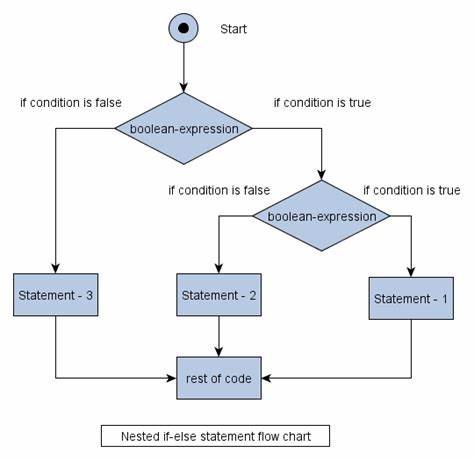Greetings programming enthusiasts. Today we are gonna give you a deep dive about python conditional statements.

Greetings programming enthusiasts. Today we are gonna give you a deep dive about python if else statements.
Before learning about pythons if else statements, you have to be familiar with the usual logical conditions.
example:
a = 5
b = 5
print(a == b) #returns true
c = 6
d = 9
print(c == d) #returns false
example:
a = 20
b = 35
print(b > a) #returns true
print(a > b) #returns false
print(a < b) #returns true
print(b < a) #returns false
>= greater or equal operator
<= less than or equal operator
c = 25
d = 25
e = 35
f = 15
print(c >= e) #returns true since c is greater than e
print(c >= d) #returns true since c is equal to e
print(f <= c) #returns true since f is less than c
print(c <= d) #returns true since c is equal to d
print(c <= f) #returns false
This is how it follows
if condition:
# if the condition is true, run this code
else:
# if the condition is false run this code
here is a simple example.
A = 5
B = 7
if A > B: #checks whether the A is greater than B
print('A is greater than B') # runs this if the above condition is true.
else:
Print('B is greater than A') #runs this if the above condition is false.
In this case, this code block gets executed since A > B is false (A is 5 and B is 7)
'B is greater than A'
Here is another example.
age = int(input('Enter your age: ')) # gets the age as an input from the user and convert it into a number type
if age >= 18: # checks the age the user gave as input is greater or equal to 18
print('You are eligible to vote.')
else:
print('You are not eligible to vote yet.')
If you enter any number that is equal or greater than 18 as the input (lets say 25) you get this output
You are eligible to vote
If you enter any number that is less than 18 as the input (lets say 15) you get this output
You are not eligible to vote
The elif statement allows you to check multiple conditions sequentially, and if the preceding if or elif conditions are not satisfied, the block of code associated with the first true condition is executed.
if condition1:
# Code to execute if condition1 is true
elif condition2:
# Code to execute if condition2 is true
elif condition3:
# Code to execute if condition3 is true
else:
# Code to execute if none of the above conditions are true
Here is a simple example
# Assume some variable
grade = 85
# Check different conditions using if, elif, and else
if grade >= 90:
print("A")
elif grade >= 80:
print("B")
elif grade >= 70:
print("C")
elif grade >= 60:
print("D")